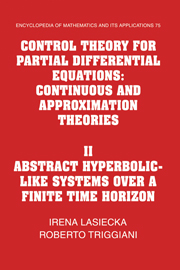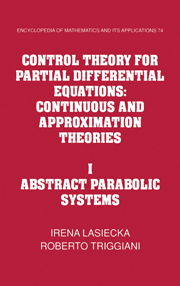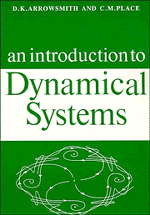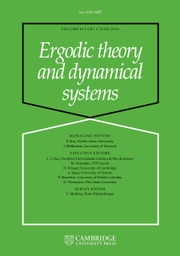Classical Control Using H-infinity Methods
An Introduction to Design
- Authors:
- J. William Helton
- Orlando Merino
- Date Published: August 1998
- availability: This item is not supplied by Cambridge University Press in your region. Please contact Soc for Industrial & Applied Mathematics for availability.
- format: Paperback
- isbn: 9780898714241
Paperback
Looking for an inspection copy?
This title is not currently available for inspection. However, if you are interested in the title for your course we can consider offering an inspection copy. To register your interest please contact asiamktg@cambridge.org providing details of the course you are teaching.
-
One of the main accomplishments of control in the 1980s was the development of H8 techniques. This book teaches control system design using H8 methods. Students will find this book easy to use because it is conceptually simple. They will find it useful because of the widespread appeal of classical frequency domain methods. Classical control has always been presented as trial and error applied to specific cases; Helton and Merino provide a much more precise approach. This has the tremendous advantage of converting an engineering problem to one that can be put directly into a mathematical optimization package. After completing this course, students will be familiar with how engineering specs are coded as precise mathematical constraints.
Customer reviews
Not yet reviewed
Be the first to review
Review was not posted due to profanity
×Product details
- Date Published: August 1998
- format: Paperback
- isbn: 9780898714241
- length: 183 pages
- dimensions: 250 x 176 x 10 mm
- weight: 0.33kg
- availability: This item is not supplied by Cambridge University Press in your region. Please contact Soc for Industrial & Applied Mathematics for availability.
Table of Contents
Preface
Part I. Short Design Course:
1. A Method for Solving System Design Problems
Rational Functions
The Closed Loop System S
Designable Transfer Function
A System Design Problem
The Method
Exercises
2. Internal Stability
Control and Stability
Interpolation
Systems With a Stable Plant
Exercises
3. Frequency Domain Performance Requirements
Introduction
Measures of Performance
Piecing Together Disk Inequalities
More Performance Measures
A Fully Constrained Problem
4. Optimization
Review of Concepts
Generating a Performance Function
Finding T With Best Performance
Acceptable Performance Functions
Performance Not of Circular Type
Optimization
Internal Stability and Optimization
Exercises
5. A Design Example With OPTDesign
Introduction
The Problem
Optimization With OPTDesign
Producing a Rational Compensator
How Good is the Answer?
Optimality Diagnostics
Specifying Compensator Roll-off
Reducing the Numerical Error
Rational Fits
Exercises
Part II. More on Design:
6. Examples
Numerical Practicalities
Design Example 1
Time Domain Performance Requirements
Design Example 2
Performance for Competing Constraints
7. Internal Stability
Calculating Interpolants
Plants With Simple RHP Zeros and Poles
Parameterization. The General Case
Exercises
References and Further Reading
Part III. Appendices: Appendix A. History and Perspective
Appendix B. Getting OPTDesign and Anopt
Appendix C. Anopt Notebook
Appendix D. NewtonInterpolant Notebook
Appendix E. NewtonFit Notebook.
Sorry, this resource is locked
Please register or sign in to request access. If you are having problems accessing these resources please email lecturers@cambridge.org
Register Sign in» Proceed
You are now leaving the Cambridge University Press website. Your eBook purchase and download will be completed by our partner www.ebooks.com. Please see the permission section of the www.ebooks.com catalogue page for details of the print & copy limits on our eBooks.
Continue ×Are you sure you want to delete your account?
This cannot be undone.
Thank you for your feedback which will help us improve our service.
If you requested a response, we will make sure to get back to you shortly.
×










